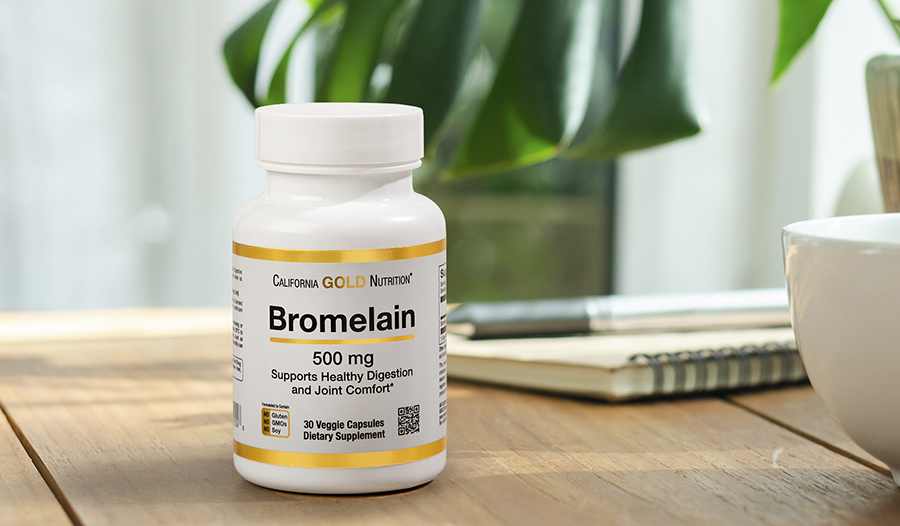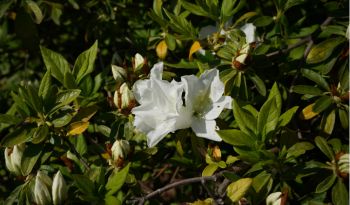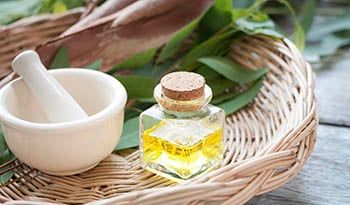6 zdravotních přínosů bromelainu + potravinových zdrojů, forem a vedlejších účinků

Co je bromelain?
Bromelain je skupina enzymů obsahujících síru získaných z rostliny ananasu. Bromelainové doplňky se vyrábějí ze stonku ananasové rostliny, která se liší od bromelainu získaného z ovoce.1
Výzkum a přínosy bromelainu se téměř výhradně týkají bromelainu získaného ze stonku, který byl představen jako doplněk stravy v roce 1957. Od té doby se v lékařské literatuře objevilo více než 300 vědeckých prací o jeho příznivých účincích.
Na co se používá bromelain?
Zatímco bromelain může být užitečný jako pomůcka při trávení, používá se především k podpoře zotavení po zranění, podvrtnutí, deformaci, artritidě, chirurgickém zákroku a dalších fyzických traumatech. Bromelain je také užitečný při podpoře zotavení těla ze zánětu, což je dobře zdokumentovaný účinek v různých experimentálních modelech a klinických studiích.2
Bromelain působí primárně tak, že stimuluje produkci plazminu, sloučeniny, která blokuje tvorbu prozánětlivých sloučenin a rozkládá fibrin - látku, která podporuje otoky, záněty a tvorbu jizev. 3 Díky samostatnému mechanismu bylo prokázáno, že bromelain také snižuje produkci sloučenin známých jako kininy. 4 Tyto sloučeniny způsobují po sobě mnoho zánětů, otoků a bolesti traumatické poranění (jako sportovní zranění).
Bromelain a sportovní zranění
Klinické studie prokázaly, že bromelain je účinný při různých sportovních zraněních. Jednou z nejzajímavějších studií byla studie z roku 1960 zahrnující boxery.5 Skupina, která dostávala bromelain, zaznamenala rychlejší vyřešení poranění obličeje. Padesát osm ze sedmdesáti čtyř boxerů užívajících bromelain uvedlo, že všechny známky modřin zcela zmizely během čtyř dnů. Ze zbývajících šestnácti trvalo úplné vyřízení 8 až 10 dní. Naproti tomu ze sedmdesáti dvou kontrol pouze deset vykazovalo modřiny zcela vyčištěné na konci 4 dnů, zbytek trval 7 až 14 dní.
Bromelain a zotavení z chirurgie
Schopnost bromelainu snížit otoky, modřiny, dobu hojení a bolest po chirurgických zákrocích byla prokázána v mnoha klinických studiích. Bromelain se ukázal jako zvláště užitečný při zotavení ze zubních operací, jako je extrakce zubu moudrosti.6 V poslední studii byl bromelain porovnáván se standardní lékovou terapií (aceklofenak) po odstranění zasaženého zubu moudrosti.7 Primárními výslednými proměnnými byly bolest, otok a trismus (lockjaw) hodnocené v pooperačních dnech 2 a 7. Bromelain překonal aceklofenak při snižování závažnosti otoku a trismu a prokázal podobnou úlevu od bolesti. Vědci dospěli k závěru: „Tato studie ukázala, že účinnost bromelainu byla srovnatelná s účinností aceklofenaku při snižování zánětlivých komplikací po chirurgickém odstranění postižených čelistních třetích stoliček.“
Bromelain a zdraví kloubů
Bromelain má několik příznivých účinků při podpoře zdraví kloubů, zejména u osteoartrózy (OA), degenerativní poruchy kloubů způsobené rozpadem chrupavky a dalších sloučenin kloubů. Bromelain pomáhá podporovat zdravé klouby tím, že chrání zdraví chrupavky snížením oxidačního stresu a genetické exprese sloučenin, které vyvolávají zánět a bolest.8 Klinické studie s bromelainem a dalšími proteolytickými enzymy prokázaly zlepšenou funkci kloubů, rozsah pohybu a snížené nepohodlí.9
Bromelain a dýchací cesty
Bromelain má několik účinků, které prospívají zdraví dýchacích cest. Například bromelain snižuje viskozitu sekrece dýchacích cest (tloušťku a lepivost). To pomáhá zlepšit kapacitu a funkci plic a potlačuje kašel a podráždění průdušek. Pomáhá také při ucpání nosu a dutin.10-12
Bromelain a imunitní funkce
Bromelain má velmi složité účinky na imunitní funkci. 2 Zatímco nadměrně stimulovaný imunitní systém může způsobit zánět a poškození, nedostatečně aktivní imunitní systém může zvýšit riziko infekce.
Vliv bromelainu na imunitní funkci souvisí s přímým dopadem na bílé krvinky. Přesto jsou hlubší úrovně kontroly molekulárních signálních drah a genové exprese zapojené do imunitní odpovědi pravděpodobně kritičtější pro její regulační účinky. Bromelain podporuje správné fungování imunitního systému a zachování homeostázy (rovnováhy). V závislosti na prostředí buňky a obecném stavu funkce může bromelain způsobit jak zvýšení, tak snížení aktivity/exprese stejných molekul zapojených do imunitní odpovědi.
Jedním z účinků bromelainu, který pomáhá bojovat s hyperaktivním imunitním systémem, je snížení migrace bílých krvinek (WBC) do oblastí zánětu. Přidání více bílých krvinek do zanícené oblasti je jako házet plyn do ohně. Bromelain pomáhá předcházet zhoršení zanícené a oteklé oblasti.13
Pokud jde o aktivaci schopnosti imunitního systému bojovat s infekcí, bromelain přímo zvyšuje funkci bílých krvinek a „připravuje“ bílé krvinky, aby reagovaly na signální molekuly, jako je interferon - vrozená antivirová sloučenina těla.14,15 bromelain zvyšuje jak vrozený (nespecifický) imunitní systém, tak adaptivní (specifickou) imunitní odpověď a funkci bílých krvinek.
Bromelain v křečových žilách a zánětech žil
Bylo prokázáno, že bromelain působí příznivě, když je žíla zanícena. Konkrétně bylo prokázáno, že bromelain snižuje nepohodlí, otoky, zarudnutí, citlivost, zvýšenou teplotu kůže a invaliditu při použití v dávce 500 až 750 mg denně.
Bromelain může také pomoci zlepšit vzhled křečových žil. Jedinci s křečovými žilami mají sníženou schopnost rozkládat fibrin, protein podobný jizvě. Když je fibrin uložen v tkáni poblíž křečových žil, kůže se pak stává tvrdou a „hrudkovitou“. Bromelain pomáhá této situaci, protože žilní stěny jsou základním zdrojem aktivátoru plazminogenu, který podporuje rozklad fibrinu. Bromelain působí podobně jako aktivátor plazminogenu a způsobuje rozklad fibrinu.16 Proto může bromelain pomoci zabránit rozvoji tvrdé a hrudkovité kůže nacházející se kolem křečových žil.
Dostupné formy bromelainu
Bromelain je dostupný především v tabletách a kapslích. Aktivita bromelainu je vyjádřena v různých enzymových jednotkách. Kodex potravinářské chemie (FCC) oficiálně uznává použití jednotek srážení mléka (MCU). Jednotka trávení želatiny (GDU) je další enzymová jednotka, která je přijatelná a číselně se rovná jednotce srážení mléka.
Různé druhy bromelainu jsou k dispozici na základě MCU nebo GDU. Doporučený rozsah MCU nebo GDU je 1200 až 1800 a rozmezí dávkování je 250 až 750 mg denně.
Při použití jako zažívací pomůcka by měl být bromelain užíván těsně před jídlem (ne více než třicet minut před jídlem). Při použití pro systémové účinky by měl být bromelain užíván mezi jídly na lačný žaludek (asi 1-1/2 hodiny před jídlem nebo po jídle). Účinnost přípravku bude diktovat dávkování.
Nežádoucí účinky
Pokud jste alergičtí na ananas, nepoužívejte bromelain.
Obecně platí, že bromelain je velmi dobře snášen. Bromelain je prakticky netoxický. Studie na zvířatech ukazují, že dávky až 10 gramů na kilogram tělesné hmotnosti nebyly spojeny s žádnými úmrtími.
Měď a železo deaktivují bromelain, zatímco hořčík a cystein (aminokyselina obsahující síru) aktivují bromelain. Pokud používáte bromelain jinak než jako trávicí pomůcka, doporučuje se, aby byl odebrán z jídla.
Odkazy:
- Rowan AD, Buttle DJ, Barrett AJ. Cysteinové proteinázy rostliny ananasu. Biochem J 1990; 266:869-875.
- Hikisz P, Bernasinska-Slomczewska J. Příznivé vlastnosti bromelainu. Živiny. 2021; 13 (12) :4313.
- Azarkan M, González MM, Esposito RC, Errasti ME. Proteolytické stroje kmenového bromelainu: Studium účinků jeho složek na fibrin (ogen) a koagulaci krve. Protein Pept Lett. 2020; 27 (11): 1159-1170.
- Lotz-Winter H. O farmakologii bromelainu: aktualizace se zvláštním zřetelem na studie na zvířatech o účincích závislých na dávce. Planta Med. 1990; 56 (3): 249-253.
- Blonstein JL. Kontrola otoku při boxerských zraněních. Praktikující 1969; 203:206
- Souza GM, Fernandes IA, Dos Santos CRR, Falci SGM. Je bromelain účinný při kontrole zánětlivých parametrů bolesti, edému a trismu po operaci dolní třetiny molární? Systematický přehled a metaanalýza. Phytother Res. 2019; 33:473—481.
- Gupta AA, Kambala R, Bhola N, Jadhav A. Srovnávací účinnost bromelainu a aceklofenaku při omezení pooperačních zánětlivých následků při chirurgickém odstranění dolního postiženého třetího moláru: randomizovaná kontrolovaná, trojnásobně zaslepená klinická studie. J Dent Anesth Pain Med. 2022; 22 (1): 29-37.
- Pothacharoen P, Chaiwongsa R, Chanmee T a kol. Bromelainový extrakt má antiartritické účinky prostřednictvím chondroprotekce a potlačení signalizace NF-κB a MAPK indukované TNF-α. Rostliny (Basilej). 2021; 10 (11) :2273.
- Walker AF, Bundy R, Hicks SM, Middleton RW. Bromelain snižuje mírnou akutní bolest kolena a zlepšuje pohodu způsobem závislým na dávce v otevřené studii jinak zdravých dospělých. Fytomedicína. 2002; 9:681—686.
- Rimoldi R, Ginsu F, Giura R. Použití bromelainu v pneumologické terapii. Drogy Exp Clin Res 1978; 4:55-66.
- Ryan RE. Dvojitě zaslepené klinické hodnocení bromelainů v léčbě akutní sinusitidy. Bolest hlavy 1967; 7:13-17.
- Braun JM, Schneider B, Beuth HJ. Terapeutické použití, účinnost a bezpečnost proteolytického ananasového enzymu Bromelain-POS u dětí s akutní sinusitidou v Německu. In vivo 2005; 19:417-421.
- Fitzhugh DJ, Shan S, Dewhirst MW, Hale LP. Léčba bromelainem snižuje migraci neutrofilů do míst zánětu. Clin Immunol. 2008; 128:66—74.
- Zavadova E, Desser L, Mohr T. Stimulace produkce reaktivních kyslíkem reaktivních látek a cytotoxicity u lidských neutrofilů in vitro a po perorálním podání polyenzymového přípravku. Cancer Biother 1995; 10:147-152.
- Hale LP, Haynes BF. Bromelainová léčba lidských T buněk odstraňuje povrchové molekuly CD44, CD45RA, E2/MIC2, CD6, CD7, CD8 a Leu 8/LAM1 a výrazně zvyšuje aktivaci T buněk zprostředkovanou CD2. J Immunol 1992; 149:3809-3816.
- Ako H, Cheung AH, Matsuura PK. Izolace aktivátoru enzymu fibrinolýzy z komerčního bromelainu. Arch Int Pharmacodyn Ther 1981; 254:157-167.
VYLOUČENÍ ODPOVĚDNOSTI: Tento blog není určen ke stanovení diagnózy...














































































 Obsah
Obsah















